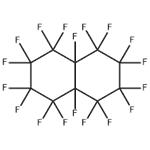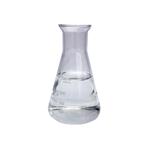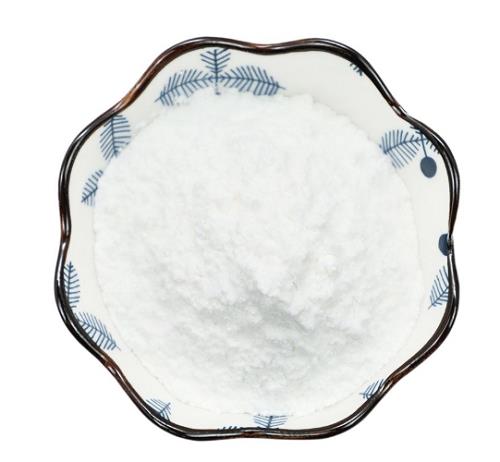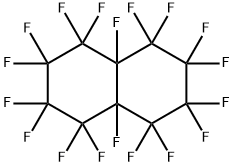Perfluorodecalin: Applications in Biotechnology, Ophthalmology, and Material Chemistry
Apr 24,2025
Perfluorodecalin is a perfluorocarbon that can carry oxygen to skin, but may also increase skin-damaging reactive oxygen species. It is often used in facial serums, moisturizers, gels and bubble masks, and may be associated with PFAS.

Liquid Perfluorodecalin Application for In Situ Extraction and Enhanced Naphthoquinones Production
Suspension cultures of Arnebia euchroma supported with liquid perfluorodecalin (PFD) degassed, aerated, or ethylene-saturated were investigated as a novel in situ extraction system for enhanced alkannin/shikonin production. Simultaneously, the effect of PFD applied as the liquid gas carrier on the growth of A. euchroma biomass was studied. The similar dry (4-fold) and fresh (7-fold) biomass increase was observed in the control (without perfluorodecalin addition) and supplemented with PFD-degassed or PFD-aerated cultures while PFD-ethylene application impeded cell growth. The highest total of alkannin/shikonin production (23.23 mg flask?1) was observed when PFD-aerated has been used and it resulted in about 50 % higher yield of alkannin/shikonin compared with the control culture. Chiral HPLC analysis revealed that in cultures supported with perfluorodecalin, both alkannin and shikonin were produced. Their mutual ratio varied depending on culture conditions, and the accumulation of alkannin prevailed under almost all culture conditions. PFD has proved to be exceptionally efficient and cell-safe solvent for the in situ extraction of naphthoquinone red pigments without exerting any detrimental effects on cell growth. Extracellularly secreted red naphthoquinones were easily dissolved and extracted from the perfluorodecalin phase, which can be regenerated and reused (e.g., in continuous culture system).[1]
The primary aim of our work was to examine the influence of Perfluorodecalin on cell growth of red naphthoquinone pigment producing cell suspension culture of A. euchroma. The influence of PFD-degassed, PFD-aerated, and PFD-ethylene compared with the control culture without any PFD has been analyzed. The time course of dry biomass increase revealed the distinct and statistically significant differences between the control culture and cultures supplemented with Perfluorodecalin, except the culture with PFD-ethylene. Medium supplementation with PFD-degassed and aerated was favorable for cell growth. The higher dry biomass accumulation in cultures with PFD-degassed and PFD-aerated layers was observed from the beginning till the third week of cultures. But finally, after 4 weeks of culture, the dry biomass increased in PFD-supplemented cultures: degassed and aerated and in the control culture achieved the same level. In the control culture, the level of cell that associated alkannin/shikonin was 2-fold higher than the extracellular one. The opposite effect was observed in cultures supplemented with PFD-degassed and PFD-aerated, where alkannin/shikonin was mostly accumulated in aqueous and Perfluorodecalin phases. In the third week, the concentration of red pigments in the aqueous phases exceeded the amount detected in PFD ones. In the culture with PFD-ethylene, such a relation was extended on the whole of the culture time.
Perfluorodecalin-based oxygenated emulsion as a topical treatment for chemical burn to the eye
Chemical injuries to the eye are emergencies with limited acute treatment options other than prompt irrigation and can cause permanent vision loss. We developed a perfluorodecalin-based supersaturated oxygen emulsion (SSOE) to topically deliver high concentration of oxygen to the eye. Perfluorodecalin (PFD), a member of the PFC family, has been used as an oxygen carrier as well as an intraoperative adjuvant in ophthalmic surgery to reposition detached retina. PFD-based oxygen emulsion has been shown to improve wound healing in second-degree burns in human and porcine skins. Herein, we report the development of an ophthalmic PFD-based supersaturated oxygen emulsion (SSOE) and evaluate its safety and efficacy in mitigating acute ocular injury in a mouse model of alkali burn.[2]
Of all PFCs, perfluorodecalin (PFD) has been most widely used in medical applications due to its high oxygen-carrying capacity, dissolving 49?mL of oxygen per 100?mL of PFD at room temperature and pressure. PFCs including PFD are hydrophobic thus must be emulsified to promote water solubility. We used two surfactants, Phospholipon 90H and Polawax (fixed proportion 5.0:1.8), to emulsify PFD. The schematic depicts the formulation of supersaturated oxygen emulsion (SSOE). Briefly, 25% (w/v) PFD was homogenized with Phospholipon 90H, Polawax, and water; the emulsified nanoparticles were then supersaturated with medical-grade oxygen gas in a high-pressure reaction vessel.
At a given temperature, the solubility of a given gas in a PFC is directly proportional to it partial pressure. We originally developed this perfluorodecalin (PFD, 35 and 55%)-based oxygen emulsion as a topical skin wound healing technology. In the current study, we formulated the emulsion for ophthalmic application by reducing PFD concentration to 25% and removing preservatives, leaving only two surfactants and water, in addition to perfluorodecalin, in SSOE. For the topically applied SSOE to increase local oxygen concentration, there are two important mechanisms of chemical species dissolution via PFC phases and transport at the colloidal suspension tissue interface at play. First, the perfluorodecalin molecules inside colloidal moieties dissolve oxygen much more readily than the non-PFD aqueous phase, allowing for much higher oxygen concentrations. A difference in concentration will exist between the aqueous phase and the PFD-rich particles. There are contradictory reports regarding its toxicity to the retina: while some reported retinal ganglion and retinal pigmented epithelial cell death with prolonged contact with perfluorodecalin liquid beyond 2 days, others reported no structural damages after 3-month vitreous tamponade in rabbits. Several cases of corneal toxicity due to direct contact between PFD droplets and cornea endothelium have been reported. It is worth noting that these agents used in vitreoretinal surgery are pure high-gravity liquids with PFD concentration above 80% (often 100%) and the toxicities are almost all due to the perfluorodecalin liquid inadvertently or experimentally left in the eye for a prolonged time. The SSOE formulation used in our study contains 25% perfluorodecalin and its application is for the ocular surface and transient (less than 1?h contact time with the eye in each application).
Development of Perfluoro Decalin/Fluorinated Polyimide Core–Shell Microparticles
Red blood cell-inspired perfluorocarbon-encapsulated core–shell particles have been developed for biomedical applications. Although the use of perfluorodecalin ( Perfluorodecalin) is expected for core–shell particles owing to its high oxygen solubility, the low solubility of Perfluorodecalin in any organic solvent, owing to its fluorous properties, prevents its use in core–shell particles. In this study, a new cosolvent system composed of dichloromethane (DCM) and heptafluoropropyl methyl ether (HFPME) was found to dissolve both Perfluorodecalin and fluorinated polyimide (FPI) based on a systematic study using a phase diagram, achieving a homogeneous disperse phase for emulsification composed of oxygen-permeable FPI and oxygen-soluble Perfluorodecalin. Using this novel cosolvent system and Shirasu porous glass (SPG) membrane emulsification, Perfluorodecalin-encapsulated FPI shell microparticles were successfully prepared for the first time. In addition to oxygenation, demonstrated using hypoxia-responsive HeLa cells, the fabricated core–shell microparticles exhibited monodispersity, excellent stability, biocompatibility, and oxygen capacity.[3]
We successfully encapsulated Perfluorodecalin using a highly oxygen-permeable and stable FPI, aided by a novel cosolvent system comprising DCM-HFPME and SPG membrane emulsification techniques. This was achieved without the need for additional cross-linking processes or solvent-induced shape adjustments. The Perfluorodecalin/FPI core–shell microparticles exhibited good oxygen-carrying capacity, morphology, stability against acid and bases, and sterilization. These properties highlight their potential utility as highly effective oxygen microcarriers for biomedical and bioproduction applications. Ultimately, our findings, along with the concept of Perfluorodecalin/FPI core–shell particle formulation and phase separation behavior, have promising implications for the application of PFC compounds in the field of material chemistry.
References
[1]yk?owska-Baranek K, Pilarek M, Cichosz M, Pietrosiuk A. Liquid perfluorodecalin application for in situ extraction and enhanced naphthoquinones production in Arnebia euchroma cell suspension cultures. Appl Biochem Biotechnol. 2014 Mar;172(5):2618-27.
[2]Li S, Pang K, Zhu S, Pate K, Yin J. Perfluorodecalin-based oxygenated emulsion as a topical treatment for chemical burn to the eye. Nat Commun. 2022 Nov 30;13(1):7371.
[3]Zhang Q, Inagaki NF, Chandel AKS, Yoshida H, Xiao D, Kamihira M, Hamada T, Sagisaka S, Kishikawa Y, Ito T. Development of Perfluoro Decalin/Fluorinated Polyimide Core-Shell Microparticles via SPG Membrane Emulsification Using Methyl Perfluoropropyl Ether Cosolvent. ACS Omega. 2024 May 3;9(19):21127-21135.
- Related articles
- Related Qustion
9-Bromoanthracene acts as an intermediate in the preparation of 9-substituted derivative of the polycyclic aromatic hydrocarbon.....
Apr 24,2025APIPromestriene is a 3-propyl and 17b-methyl ether of estradiol that has an efficient action on vaginal atrophy while it is minimally absorbed.....
Apr 24,2025APIPerfluorodecalin
306-94-5You may like
Perfluorodecalin manufacturers
- Perfluorodecalin
-

- 2025-08-04
- CAS:306-94-5
- Min. Order:
- Purity: 0.99
- Supply Ability:
- Perfluorodecalin
-

- $0.00 / 50g
- 2025-07-03
- CAS:306-94-5
- Min. Order: 10g
- Purity: 99%
- Supply Ability: 20 tons
- Perfluorodecalin
-

- $30.00 / 1KG
- 2025-06-27
- CAS:306-94-5
- Min. Order: 50KG
- Purity: 99%
- Supply Ability: 500000kg






